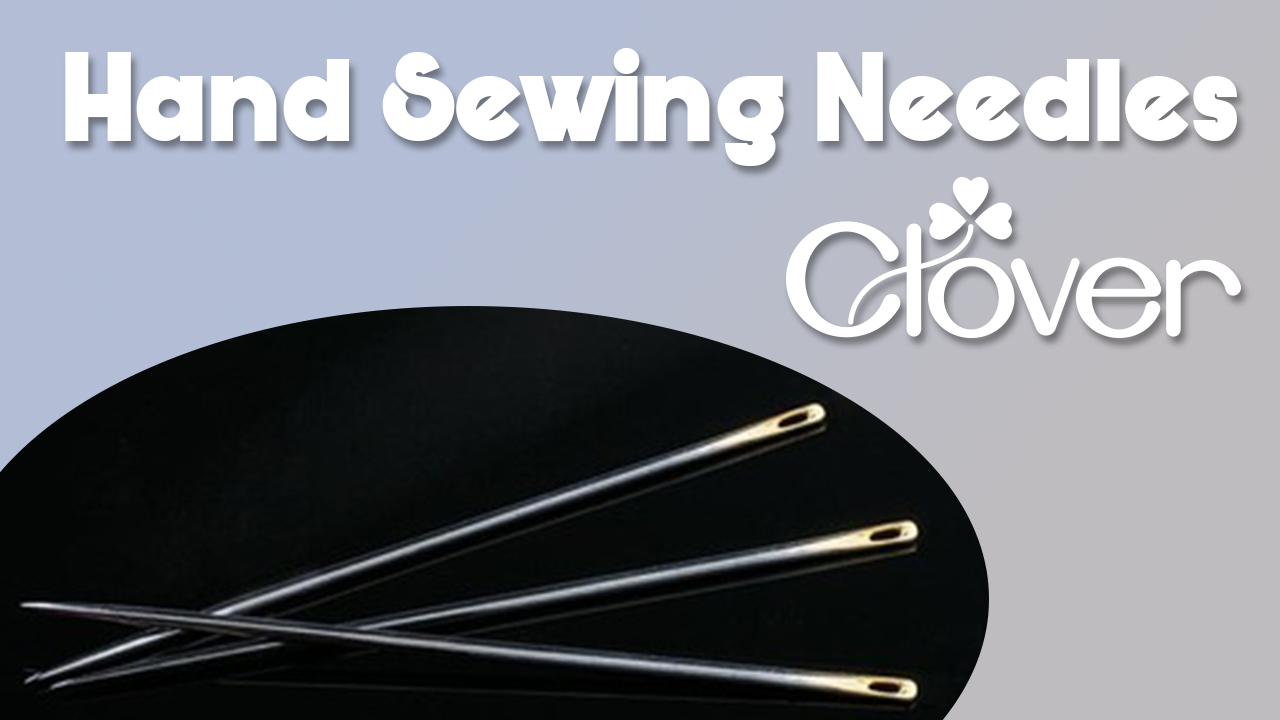What is it? – No tools are more basic to sewing than needles are. They existed even before thread and fabric as our ancient ancestors used pointed objects to perforate hides so they could be laced together with leather cords. Centuries of technology later we have highly advanced, modern hand sewing needles that do basically the same thing. But they do it so much better now. Few tools are more useful. This primordial sewing tool has evolved into virtually every genre of sewing specialty including general sewing, appliqué, embroidery, ribbon embroidery, quilting, upholstery, tapestry, basting, beading, darning, tailoring, etc. and etc. In addition to having needles specific to a wide range of applications, suitable sizes of each have developed. The general convention for sizing needles is that within any given style or class of needle the length and thickness of the needle increases as the size number decreases. Just remember it’s backwards and you’ll keep it straight. As an added complication though, a size 10 of one style of needle may be either larger or smaller than a size 10 of another style. It’s important to select the type of needle for your intended application and then select the smallest size consistent with the size of thread being used. The larger the needle the larger the eye. Having the right needle and the right size needle makes all the difference.
What does it do? – A needle has to have a point, either sharp or ball, consistent with its intended use. It has to be smooth so it pulls evenly through layers of fabric. It has to be resilient so it will flex without bending or breaking. It has to have a smooth eye that can easily be threaded and hold the thread without causing damage. It has to be durable so its term of use is not limited by the quality of materials used or manufacturing techniques applied. And all of that has to be consistent 100% of the time. Clover has gone to extraordinary effort to ensure the availability of a wide range of needle styles as well as uncompromising quality control.
Black Gold Hand Sewing Needles – Produced with unique coating materials and manufactured with a non-traditional vertical polishing process, the Black Gold needles are a premium brand. Strong, sharp and uncommonly smooth they are the choice of those to whom ultimate performance is a necessity.
-
Black Gold Quilting Between – primarily for quilting or anything requiring small, precise stitches
-
Black Gold Appliqué/Sharps – a good general purpose needle suitable for most general applications
-
Black Gold Quilting – prefect for short, precise hand quilting stitches
Clover Gold Eye Hand Sewing Needles – Gold Eye Hand Sewing Needles are perfect for a wide range of hand sewing applications. They are available in several styles and sizes.
-
Gold Eye Quilting – perfect for short, precise hand quilting stitches
-
Gold Eye Appliqué – ideal for detail work that requires a sharp point that penetrates without bending
-
Gold Eye Embroidery for Smocking – perfect for smocking, heirloom sewing, embroidery and crewel
-
Gold Eye Quilting Between – a little shorter and narrower than the quilting needle
-
Gold Eye Self Threading – a general purpose needle with an easy to thread slotted eye
-
Gold Eye Hawaiian Quilting – especially suited for Hawaiian style appliqué quilting
-
Gold Eye Beading – ideal for beads, sequins, pearls, etc.
-
Gold Eye Sashiko and Gold Eye Sashiko Long Style – long and extra long shafts to accommodate sashiko embroidery techniques
-
Gold Eye Embroidery (blunt tip) – perfect for embroidery on canvas or loosely woven materials
-
Gold Eye Embroidery – ideal for embroidery, heirloom or general sewing
-
Gold Eye Huck – unique curved tip enables easy fabric manipulation
-
Gold Eye Chenille – perfect for crewel embroidery and ribbon
-
Gold Eye Milliners – great for basting, pleating and decorative stitches
-
Gold Eye Sharps – this is the “go to” general hand sewing needle
-
Gold Eye Tapestry – perfect for needlepoint, counted cross stitch, etc.
-
Gold Eye Double Eye and Double Eye Fine (blunt tip) – ideal for decorative needle work using dual threads
How do I share it? – This has to be an education process. Most people have just “made do” with whatever was available and because of that don’t realize the benefits of using a needle designed for a specific purpose. Make that process a deliberate part of every class that is taught. Just take a few minutes at the beginning of each and every class to cover the specifics of one or two needle styles. It’s also a good idea to have specific classes that require hand needle use, i.e. appliqué or hand quilting. Stick with it. Perseverance will pay off and everyone will get the point.
